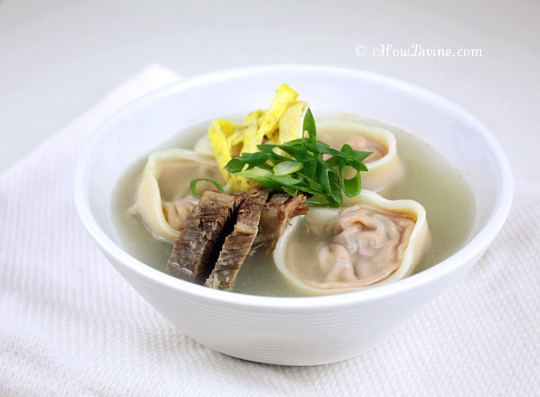Alternative names Dumpling soup Main ingredients Mandu | ||
 | ||
Similar Mandu, Tteokguk, Kal‑guksu, Jeongol, Guk | ||
Dumpling soup mandu guk
Mandu-guk (만둣국) or dumpling soup is a variety of Korean soup (guk) made by boiling mandu (dumplings) in a beef broth or anchovy broth mixed with beaten egg.
Contents
History
According to the 14th century records of Goryeosa (고려사), mandu had already been introduced via Central Asia during the Goryeo era. Mandu was called sanghwa (쌍화) or gyoja (교자) until the mid-Joseon Dynasty and became a local specialty of the Pyongan and Hamgyong regions, as both wheat and buckwheat — the main ingredients for flour — were mainly cultivated in the north.
Mandu was made and cooked in various ways, including manduguk. In the Korean royal court, the dish was called byeongsi (餠匙) while in Eumsik dimibang, a Joseon Dynasty cookbook, it was called "seokryutang" (석류탕). The exact era when manduguk got its modern name is unknown.
Preparation and serving
Dumplings are made by rolling out thin circles of dough, creating a half-moon shape and filling them with a mixture of minced meat, vegetables, tofu and sometimes kimchi. The dumplings are then boiled in a broth traditionally made by boiling anchovies, shitake mushroom stems and onions. Towards the end of cooking, beaten eggs are added to the broth to create a richer taste and more green onions for flavor and garnish similar to the egg drop soup of the Chinese .
Some variations make the broth from beef stock. The addition of tteok which is a cylindrical rice cake is common as well, changing the dish's name into tteok-mandu-guk.
